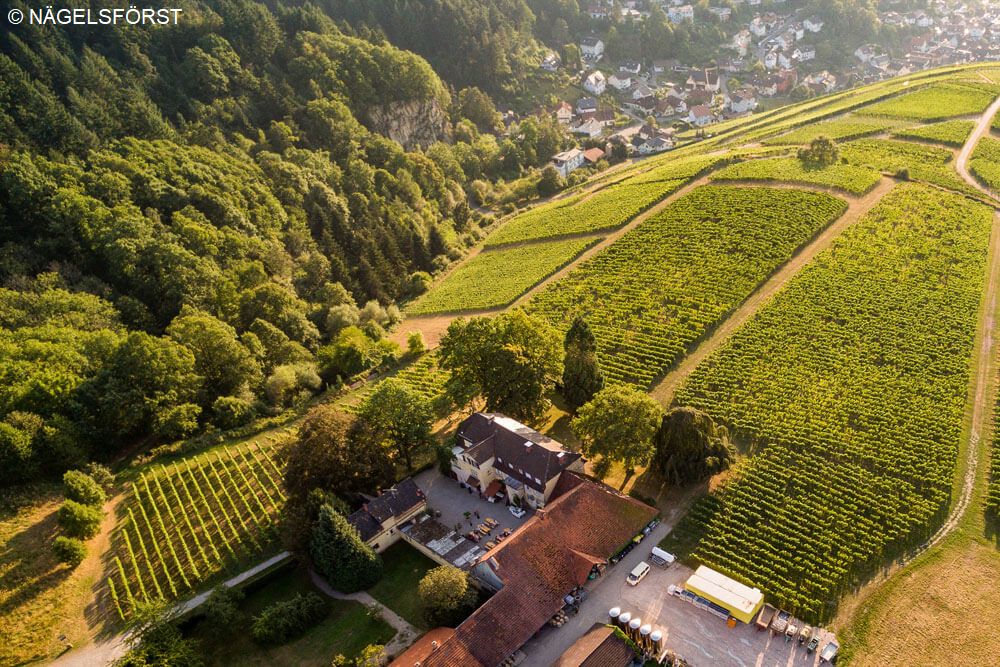The traditional winery is located in Baden-Baden, district of Varnhalt, in the German wine-growing region of Baden. Thanks to the surrounding mountains, the climate forms the perfect basis for the cultivation of high-quality wines. The Cistercian nuns of Lichtenthal Abbey recognised this potential as early as 1268, when they planted the first Pinot Noir vines on the Klosterberg rock, which they had imported from the mother monastery in Cîteaux near Beaune (Burgundy). Due to the secularisation measures carried out under Emperor Napoleon (1769-1821), the property fell to the Margrave of Baden in 1802. The margravial court administration sold the estate in 1864 to Rudolf von Koch, who co-founded the Deutsche Bank in Berlin in 1870.

Since 2016, the estate has been owned by a family from Middle Franconia in Bavaria. A wine tavern is attached. The house also serves as an event location for wine tastings, weddings, family celebrations, seminars, corporate events and cooking courses. Steffen Röll is the director of operations, with Annette Bähr (cellar master), Waldemar Krapiec (sales), Patric Hohl (business manager and marketing) and Tanja Frietsch (events) assuming further responsibilities. The vineyards cover 33 hectares in the single vineyards Stich den Buben (Umweg), Klosterbergfelsen (Varnhalt), Mauerberg (Neuweier), and Engelsfelsen (Bühlertal). They are 70% planted with the white wine varieties Riesling, Sauvignon Blanc, Chardonnay, Gewürztraminer, Pinot Blanc, Pinot Gris and Auxerrois, and 30% with the red wine varieties Pinot Noir, Cabernet Sauvignon, Merlot and Tempranillo. The white wine vines are reduced to an average of 45 to 50 hl/ha, the red wine vines for the top wines even to 20 hl/ha in order to increase the quality.
The three-part classification of the wines (based on the VDP classification model) into estate wines, local wines and site wines represents the modern key to a wine culture characterised by origin on the one hand, and the simpler allocation of the preferred wine for the consumer on the other. The white wines are mostly matured in traditional large wooden barrels or in barriques in order to give them more longevity and structure in taste. The red wines are aged exclusively after traditional mash fermentation for at least 12 months in large wooden barrels and in barriques. To mark the 750th anniversary, the red wine cuvée "Quantum Reserve 750" was bottled in limited quantities in a clay bottle in 2018. It was blended from the varieties Cabernet Sauvignon, Merlot and Tempranillo, true to the winery's motto "Drink dreams. Experience time". In addition, noble sweet wines up to Trockenbeerenauslese, bottle-fermented Crémants bottled after 30 months of yeast storage, as well as non-alcoholic sparkling wine are also produced.
Voices of our members

Using the encyclopaedia is not only time-saving, but also extremely convenient. What's more, the information is always up to date.
Markus J. Eser
Weinakademiker und Herausgeber „Der Weinkalender“